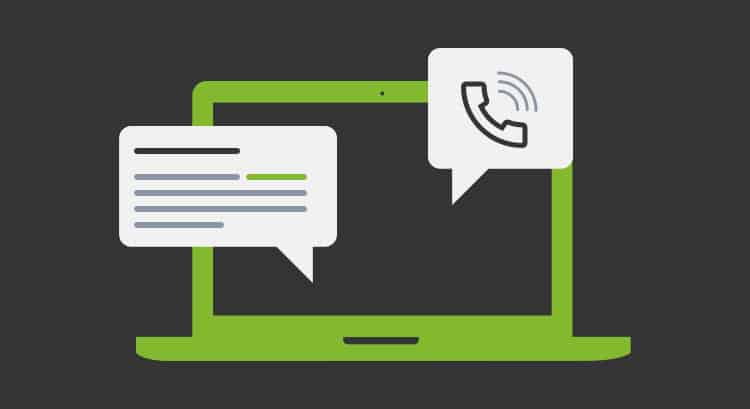Remote work monitoring: key issues
One benefit of the lockdown triggered by the coronavirus epidemic has been a renewed enthusiasm for working at home. Forced to let millions of employees work from home to avoid contagion, companies that had been hesitant about taking this step have concluded they can benefit from moving to a remote workforce.
One of the main drivers behind this shift is the economic incentive as having an employee work from home half the time can save an employer thousands of dollars a year in increased productivity, lower real estate costs, and reduced absenteeism. In order to realize these benefits, many companies are deploying employee monitoring software. However, using this software to keep tabs on employees can have disadvantages for organizations.
In this article, we’ll look at how organizations are deploying employee monitoring software, the problems it can lead to, and show you how to use it effectively.
1. Remote Working monitoring
The huge shift to remote working caused by the pandemic has led to a parallel rise in the use of remote monitoring software. Numerous media outlets have reported how computer monitoring software products have flourished during the coronavirus pandemic as companies try to keep tabs on far-flung workers.
The use of this software is certainly understandable and represents a critical component of managing your workers remotely. For many managers who are familiar with “traditional” office environments, suddenly letting their staff work with far less supervision often leads to fears that they will be less productive. There are also legitimate fears that a move to remote working might make computer networks less secure.
Given these concerns, employee remote working monitoring software seems a natural way to remotely manage a business, and to ensure that remote employees and freelancers stay safe while they are working remotely
2. The Pitfalls of Surveillance
Unfortunately, your employees might not see it this way. Some of the more advanced employee monitoring solutions allow employers to track what websites employees are visiting, measure mouse movements, and even monitor keystrokes. Though this kind of digital monitoring of employees was an existing work trend before the emergence of COVID-19, the pandemic has exacerbated fears that employers might “spy” on their employees.
An over-eager application or remote working monitoring software risks alienating your employees, and this can have a major impact on your staff retention rates. Research led by Baylor University forecast workers’ likelihood of quitting their jobs, and found that monitoring software correlated with greater employee tension and less job satisfaction, indicating higher turnover intent. Indeed, one of the major reasons why workers in the tech sector turn to remote work and freelancing is to avoid this kind of stress.
It’s not all bad news, though. Research conducted in 2019 by researchers at the University of Jyväskylä in Finland sought to measure the consequences of internet monitoring software, and found that this kind of monitoring had some positive effects. The research suggests that this kind of surveillance slightly increases employees’ motivation to earn rewards or avoid punishment. However, the same research also found that tracking internet activity can significantly reduce employees’ intrinsic work motivation, and has a major deleterious effect on their creativity.
3. Taking an Intelligent Approach
Given this research, it’s clear that employers should take an intelligent approach to monitoring their remote employees. At the most fundamental level, employers need to strike a careful balance between surveillance and trust. Having no monitoring software at all will harm productivity, but tracking employees too closely will reduce their creativity.
When looking to use employee monitoring software, the approach should therefore be one in which you try to create a healthy remote work culture, rather than relying on punitive sanctions if remote employees don’t meet their targets.
Achieving a healthy work culture, in turn, rests on a simple realization: we have offices for a reason. The traditional office is effective and productive not because it allows managers to continually check what their employees are doing, but because it allows easy and instant communication between employees and managers.
In many regards, the cloud has become the office of the remote worker. The most popular cloud storage services such as Google Drive or iCloud come with numerous important features that make remote work both convenient and safe, such as numerous third party app integrations, simple user interfaces. 256-bit encryption, and machine learning-powered anomaly detections. Additionally, the cloud provides a way for cybersecurity engineers to secure computer networks, because all of your critical data is stored in one place.
The best employee monitoring software is therefore built to be far more than just a simple productivity monitoring tool. Instead, this type of software acts as a communication portal through which teams are able to coordinate and track their work, and also to secure client data in remote environments.
By focusing on the “outputs” that employees produce, rather than the raw number of hours they are putting into their work, managers can avoid the perception that they are “spying” on their employees. If employee monitoring software is deployed as a tool for communication and collaboration, rather than as a surveillance platform, employees will recognize that their managers are working to support them, rather than checking in on their every move.
Sam Bocetta is a former security analyst for the Department of Defense and current freelance journalist specializing in writing about cybersecurity, technology, and cryptography. In his spare time, he enjoys traveling around the United States in his RV with his wife and fly fishing out in the woods. Currently working as part-time cybersecurity coordinator at assignyourwriter.co.uk
Sam Bocetta es un antiguo analista de seguridad del Departamento de Defensa y actual periodista independiente especializado en escribir sobre seguridad cibernética, tecnología y criptografía. En su tiempo libre, disfruta viajando por los Estados Unidos en su RV con su esposa y pescando con mosca en el bosque. Actualmente trabaja como coordinador de ciberseguridad a tiempo parcial en assignyourwriter.co.uk
















